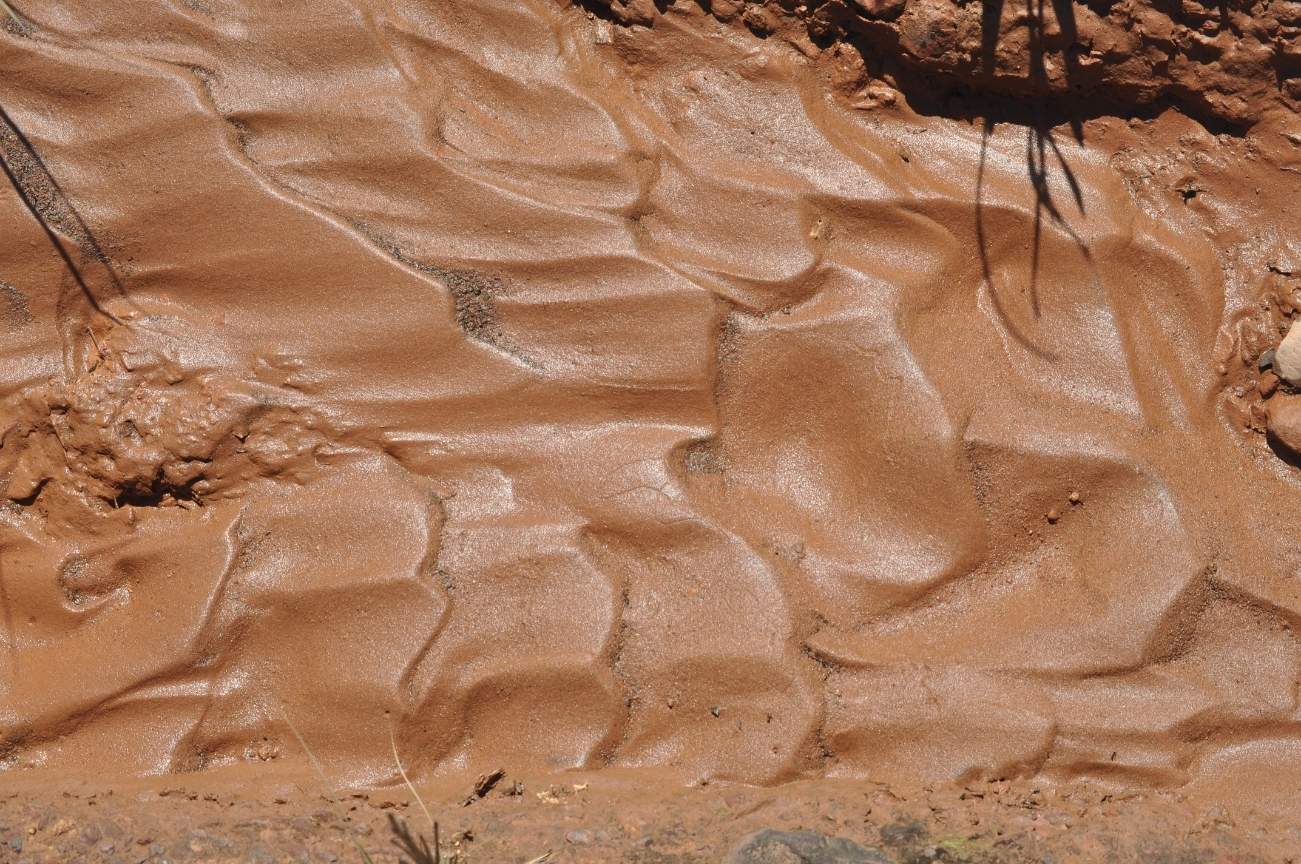Understanding erosion control and sediment management is crucial for effective site development. While this topic may seem technical, it’s vital for preserving the environment, avoiding costly fines, and ensuring successful project outcomes. Let’s dive deep into the facets of erosion control and sediment management that you might not know but definitely should.
Introduction
Erosion control and sediment management play a pivotal role in site development. Erosion erodes not only soil but also profits and timelines. Understanding how to manage it effectively is essential for any civil construction project.
Why Erosion Control Matters
When soil washes away, it can lead to severe consequences. For instance, eroded land can affect waterways and ecosystems. This not only harms wildlife but can also put your project at risk of regulatory fines. Missed deadlines and budget overruns often result from unchecked erosion.
In civil construction, erosion control isn’t just a good practice—it’s a necessity. Proper erosion management helps you maintain compliance with environmental regulations. These regulations protect our natural resources while promoting sustainable site development.
Setting the Stage
Picture this: a construction site bustling with activity. Heavy machinery rumbles, workers hustle, and plans unfold. Yet, if erosion isn’t controlled, all this hard work is at stake. Even a minor misstep can lead to sediment runoff, damaging local water bodies.
That’s where sediment management becomes crucial. It focuses on controlling the amount and movement of sediment caused by erosion. Integrating erosion control measures helps create a solid foundation for managing sediment effectively.
In short, understanding erosion control and sediment management equips you to handle challenges head-on. It maximizes your project’s chances of success while minimizing its impact on the environment.
Now that we’ve set the stage, let’s delve into the basics of erosion control. We’ll explore what erosion is, its causes, and how it impacts wetland ecosystems and your projects. Stay tuned!
The Basics of Erosion Control
Erosion is the gradual wearing away of soil and rock. It can happen with the movement of water, wind, or even ice. Understanding erosion is crucial for anyone involved in site development. This knowledge directly impacts how we protect our landscapes and manage resources effectively.
What is Erosion?
Erosion occurs when natural forces disturb soil and rock. Water erosion involves raindrops dislodging soil particles, while wind can carry away loose dirt. Geological factors like earthquakes and landslides also contribute. Various types of erosion can lead to significant environmental changes, affecting both the site and surrounding areas.
Causes of Erosion
Both natural events and human activity can cause erosion. Heavy rains and floods are notable natural triggers. However, human activities, like deforestation and poor agricultural practices, often exacerbate the problem. For instance, when developers clear land for construction, they expose soil to the elements. This can lead to devastating results, including loss of fertile land and increased sediment in nearby water systems.
If left unmanaged, erosion can cause significant challenges. Urban areas may face flooding as sediment clogs drainage systems. Additionally, sediment runoff can harm aquatic ecosystems, suffocating fish and plants. Therefore, proactive measures for erosion control are essential.
Overall, understanding the basics of erosion highlights the importance of effective management strategies in site development. By recognizing the causes and implications of erosion, developers can make informed decisions that benefit both their projects and the environment.
Understanding Sediment Management
Sediment management is a critical aspect of any construction project. It refers to controlling, transporting, and disposing of sediment generated during site development. Understanding sediment management helps in minimizing its environmental impact and complying with regulations.
What is Sediment Management?
Sediment management involves techniques aimed at reducing the impact of sediment runoff during and after construction. Without proper management, sediment can clog waterways, disrupt ecosystems, and lead to costly fines. Effective sediment management protects water quality and maintains the integrity of aquatic environments.
Importance of Sediment Control
Unregulated sediment in water systems poses significant issues. It can cause increased turbidity, harming fish and other aquatic life. For project managers, failing to control sediment can lead to serious legal implications. Regulatory agencies enforce stringent sediment control measures to protect the environment. Understanding these obligations is essential for civil construction projects.
Regulatory standards specify how much sediment can enter waterways and under what conditions. Failure to comply can lead to hefty fines or project delays. Therefore, it’s crucial to implement a robust sediment management plan that meets these requirements.
Key Components of Effective Sediment Management
Erosion Control Measures: Good management begins with preventing erosion. Techniques like silt fences, sediment basins, and vegetation can significantly reduce sediment loss.
Monitoring: Consistent monitoring ensures compliance with regulations and can help quickly address any issues that arise. Regular assessments can identify problems before they escalate.
Adjusting Techniques: Be ready to adapt deployed techniques based on weather or site conditions. What works today might need modification tomorrow.
Effective sediment management does not just protect the environment; it also enhances the reputation of a company. By prioritizing sediment control, construction firms demonstrate their commitment to sustainable practices. Overall, understanding sediment management is essential for successful site development.
Erosion Control Best Practices
Erosion control is essential for any site development project. It not only protects the environment but also reduces costs related to damage and compliance fines. Here are some crucial best practices you need to know for effective erosion control.
Preventive Measures
Before breaking ground, it’s vital to adopt preventive measures. Start by developing a solid site plan. This plan should identify vulnerable areas and outline appropriate erosion control methods.
One key strategy is to maintain natural vegetation as much as possible. Root systems help hold soil in place, making it less susceptible to erosion. In areas where vegetation must be removed, consider installing temporary erosion control measures until re-vegetation occurs.
Additionally, implement graded slopes in your site design. Gentle slopes reduce erosion risk by slowing down water runoff. Effective grading also helps capture and redirect water, minimizing its impact.
Effective Control Techniques
After establishing preventive measures, focus on effective erosion control techniques. Silt fences are commonly used to filter sediment from water runoff. They are easy to install and remove, making them a practical choice for construction sites.
Another method is the installation of sediment basins. These basins capture and store sediment-laden water, allowing sediment to settle before runoff enters nearby water bodies. It’s a straightforward solution that greatly improves sediment management.
Don’t overlook the power of vegetation cover. Planting grasses and shrubs can significantly reduce soil erosion. Their roots create a strong network, which holds soil in place while also benefitting local ecosystems.
Innovative technologies are also changing the Erosion Control landscape. Geotextiles and erosion control mats help stabilize soil and provide temporary protection until vegetation is established. They are particularly effective in areas prone to heavy rainfall.
Sediment Management Techniques
Managing sediment effectively is essential for any construction project. When sediment is ignored, it can lead to disastrous consequences for local ecosystems and water quality. Below, we’ll explore best practices and advanced techniques for sediment management that can help your project stay on track.
Best Practices for Managing Sediment
Starting with the basics, it’s critical to plan ahead when it comes to sediment management. Here’s a step-by-step guide to help you maintain control during and after construction:
Site Assessment
Before any work begins, conduct a thorough site assessment. Identify areas prone to sediment displacement. Knowing the landscape can guide your preventive measures.Implement Sediment Controls During Construction
Use barriers like silt fences and sediment basins to capture sediment runoff. These controls allow you to manage sediment more effectively while work is ongoing.Inspect and Maintain Controls
Regular inspection and maintenance of your sediment control measures are crucial. Adjust or repair any barriers that aren’t functioning properly to ensure continued effectiveness.Post-Construction Cleanup
After completing construction, ensure all sediment control measures remain in place until vegetation re-establishes. This step is vital for stabilizing the soil and preventing future erosion.Educate Your Team
Make sure everyone involved understands the importance of sediment management. An informed team can better implement effective practices in the field.
Advanced Techniques
As technology evolves, sediment management methods also improve. Here are some innovative approaches to consider:
Biodegradable Filtration Systems
Using biodegradable materials for filtration can effectively capture sediments without harming the environment. These systems decompose over time, leaving no waste behind.Hydro-Mulching
This technique involves applying a slurry of mulch, seed, and water to exposed soil. Hydro-mulching helps establish vegetation quickly, minimizing erosion right from the start.Sediment Traps and Basins
These specialized structures can be designed to enhance sediment trapping efficiency. They often feature multiple layers or chambers to slow water flow, allowing sediments to settle more effectively.- Real-Time Monitoring Technology
Emerging technologies like drones and sediment sensors provide real-time data on sediment levels. This information allows you to respond quickly to any issues, ensuring ongoing compliance and environmental safety.
By incorporating these advanced techniques, you can enhance your sediment management strategies while also protecting the environment. A proactive approach to sediment management will not only meet regulatory requirements but also contribute to long-term sustainability on your site.
Regulations and Compliance
Erosion control and sediment management aren’t just good practices; they’re legal obligations. Understanding the regulatory landscape helps site developers avoid pitfalls. Let’s break down the essential regulations and compliance measures you need to know.
Legal Framework
Both local and federal regulations govern erosion control and sediment management. The Clean Water Act (CWA) is a key piece of legislation that establishes roles for federal, state, and local agencies in managing water quality. Under the CWA, developers must mitigate sediment runoff that can harm aquatic environments.
The National Pollutant Discharge Elimination System (NPDES) requires site developers to secure permits for projects that disturb one acre or more. These permits mandate the establishment of erosion and sediment control plans before breaking ground. Failing to comply can lead to hefty fines, environmental damage, and legal disputes.
Consequences of Non-Compliance
Ignoring regulations can result in serious repercussions. Projects may face halted construction, financial penalties, and even lawsuits from environmental groups. Furthermore, non-compliance can tarnish a developer’s reputation. Ensuring adherence to regulations proves beneficial not only for project success but also for environmental sustainability.
Permitting Processes
Obtaining the necessary permits can be a daunting task. It typically involves several steps, including:
- Identifying Requirements: Determine which permits apply based on the project size and location.
- Submitting Plans: Prepare and submit erosion and sediment control plans to relevant authorities.
- Review Process: Authorities will review submissions for compliance with local and federal regulations.
- Ongoing Monitoring: Once permits are granted, ongoing monitoring and reporting might be required to ensure compliance.
Engaging with local environmental agencies early in the planning process can ease the permitting journey. They can guide you through requirements and best practices, ensuring smoother project execution.
In conclusion, understanding regulations and securing permits are crucial components of successful erosion control and sediment management. They not only protect the environment but also safeguard your project’s future.
Site Development Tricks for Erosion and Sediment Control
When it comes to site development, controlling erosion and managing sediment can make or break a project. Here are some practical, site-specific tricks to enhance your erosion and sediment control efforts.
Creative Solutions and Tips
1. Utilize Native Vegetation
Planting native species is a strong erosion control strategy. Their root systems stabilize soil effectively. Plus, native plants require less water and maintain biodiversity. Consider using them in your site plans to enhance soil health.
2. Implement Contour Plowing
On sloped sites, contour plowing can be invaluable. This technique involves plowing across the slope rather than down. It creates natural barriers that reduce runoff and soil displacement. The result? Improved soil retention and less erosion.
3. Create Check Dams
Check dams, made from small rocks or logs, slow down water flow in channels. This reduces soil erosion and promotes sedimentation. Installing check dams in your drainage channels can be a game changer for managing sediment.
4. Schedule Work During Dry Seasons
Plan your construction activities for drier months. Less rainfall means lower erosion risk. If possible, coordinate excavation and grading during these times to minimize disruption and control sediment more effectively.
Collaboration and Communication
Effective erosion and sediment control relies heavily on teamwork. Engaging civil engineers, architects, and environmental professionals ensures that everyone is on the same page.
1. Foster Open Lines of Communication
Set up regular meetings to discuss erosion control strategies. This keeps everyone informed and allows for immediate adjustments. When challenges arise, quick communication can lead to rapid solutions.
2. Share Responsibilities
Designate roles within your team regarding erosion control measures. By assigning specific tasks, you ensure accountability and efficiency. Each team member should understand their role in managing erosion and sediment.
3. Conduct Joint Site Assessments
Regular site assessments are essential. Collaborate to identify potential erosion risks and discuss preventative measures. A united front strengthens the approach to tackling erosion and sediment at every stage of development.
Implementing these tricks will go a long way in enhancing your site’s erosion control and sediment management efforts. Teamwork and creative strategies not only protect the environment but also contribute to the success of your projects.
Case Studies
Success Stories
Understanding erosion control and sediment management is best grasped through real-life examples. Let’s explore a few case studies that showcase effective strategies in site development.
1. Riverwalk Project, California
The Riverwalk project in California faced severe erosion issues due to its location near a river. Developers implemented a system of bioengineering techniques, incorporating native vegetation along the banks. These plants not only stabilized the soil but also enhanced the local ecosystem. As a result, the erosion rate decreased significantly, and wildlife returned to the area. This project highlights the importance of using natural solutions for erosion control.
2. Urban Redevelopment, New York
In an urban redevelopment project in New York, engineers tackled sediment runoff that threatened nearby waterways. They employed silt fences and sediment basins to capture sediments during construction. The result? Minimal sediment transport into the water systems, protecting the local habitat. The project also complied with all environmental regulations, proving that effective sediment management can go hand-in-hand with urban development.
3. Eco-Conscious Housing Development, Florida
An eco-conscious housing development in Florida prioritized erosion and sediment control from the start. The developers utilized advanced permeable pavements and rain gardens to manage runoff. This innovative approach not only mitigated erosion but also improved water quality. After monitoring the site, they found that sediment levels remained below regulatory thresholds throughout the construction phase and beyond.
Future Trends in Erosion Control and Sediment Management
In the world of construction, keeping up with trends in erosion control and sediment management is essential. The industry is evolving, influenced by environmental factors and technological advancements. Let’s explore some cutting-edge approaches and their potential impact.
Innovative Approaches
Erosion control has seen a wave of innovation lately. Green infrastructure is gaining traction. This method uses natural processes to manage runoff and reduce erosion. Techniques like bioswales and green roofs filter stormwater efficiently. Such systems not only stabilize soil but also enhance aesthetics and biodiversity.
Smart technology also plays a crucial role. Drones and remote sensing tools enable monitoring of erosion-prone areas. These technologies provide real-time data, allowing for quick adjustments. With precise imagery, teams can spot problem areas before they escalate. Automation helps streamline sediment control processes, making them more efficient.
Additionally, innovative materials are emerging in the field. For instance, biodegradable erosion control blankets made from natural fibers can help protect soil without harming the environment. This aligns perfectly with the growing demand for sustainable practices in construction.
Sustainability and Environmental Impact
Sustainability is a major focus in construction today. This trend impacts erosion control and sediment management in numerous ways. Developers are now striving to create low-impact construction practices. These methods prioritize minimal disturbance to natural habitats, which in turn reduces erosion rates.
Using native plants in erosion control strategies promotes local ecosystems. These plants require less maintenance and are more resilient to local weather conditions. By integrating native vegetation, projects support biodiversity while controlling erosion effectively.
Moreover, communities are emphasizing overall project sustainability. This means considering the long-term environmental impacts of construction practices. As awareness grows, so does the push for stricter regulations. The goal is to ensure all projects meet environmental standards, ultimately leading to healthier ecosystems.
In summary, the future of erosion control and sediment management is bright and exciting. Innovations in technology and sustainable practices are paving the way for more effective solutions. As the industry evolves, staying informed about these trends will be crucial for anyone involved in site development.
Conclusion
Understanding erosion control and sediment management is essential for anyone involved in site development. These factors not only affect project success but also the environment. As we’ve explored, effective erosion control helps minimize soil loss and protects water quality. By implementing best practices, you can prevent costly fines and adhere to environmental regulations.







